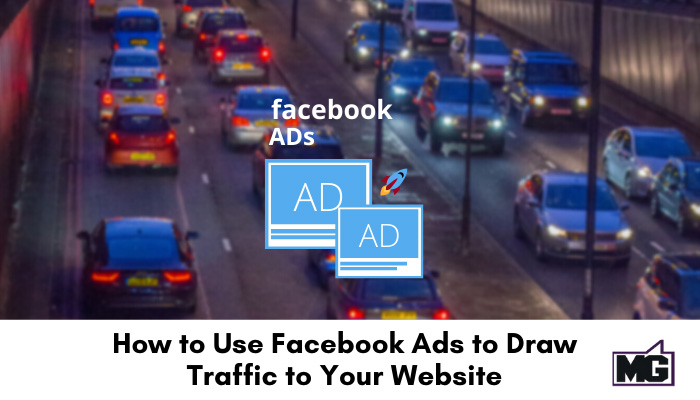How to Use Facebook Ads to Draw Traffic to Your Website

The global digital population currently stands at 4.33 billion. The increase in the internet population has given digital marketers a lucrative opportunity to grow brands and businesses. Businesses today usually have a presence on at least one social media platform. Around 90% of the businesses in the US use social media for marketing purposes. Facebook is near the top among the popular social media platforms used by businesses to reach their audience. Here is how you can use Facebook Ads to draw traffic to your website and create brand awareness.
Use Facebook Ads to Draw Traffic to Your Website
1. Engage Your Audience
Boosting Facebook engagement can bring traffic to your website. Using images in your Facebook ads to tell your story will give you more exposure. For example, posting photos of your premises and employees helps to give your audience a feel of your organization and makes you appear less promotional and sales-based. Recognizing your audience will also help to boost engagement. Sharing your visitors’ content shows them that you value their opinion, this will motivate them to engage more online.
2. Use CTAs
Having a call to action (CTA) is an effective way to boost engagement and draw traffic to your website. Furthermore, CTAs trigger your visitors to do a particular action. On Facebook, you can use a CTA to lead people to your website to make a sale, sign-up to your email list, or even read a blog post.
By including a CTA in your Facebook ads, you can encourage your audience to share your post, comment on your post, or repost your content.
3. Have a Goal
Facebook ads can be used to drive more traffic and sales to your website. Getting followers on Facebook will not happen overnight. To boost your organic traffic, use Facebook paid ads objectively: you must have a goal for an effective campaign. Your goal could either be to generate leads, increase sales or traffic, or to generate clicks.
Paid ads can be used to remarket to already engaged users. Alternatively, paid ads also work with saved audiences. Remarketing is useful when you have a big following. If you are getting started with the saved audiences, then you can use paid ads for remarketing later on.
The benefit of saved audiences is it allows you to do targeting marketing by segmenting your target users based on interests or demographics.
4. Scheduling Ads
This requires research. Knowing when is best to post will give you a competitive advantage. Research your demographics and understand when they are usually online. Facebook has a feature for scheduling posts. This way, you will be marketing your content when people are active online, for instance, after work or on the weekends. Scheduling ads maximizes engagement and helps to drive more traffic to your website.
5. Do Ad Rotation
The more you spend on Facebook ads, the more your audience gets fatigued. The Facebook audience generally will not change for a long time. You are, therefore, likely to post the same ads to the same demographics and groups over an extended period. Audience fatigue will begin to set in, and this can affect your ad performance.
Ad fatigue can be combated through ad rotation. You can use the ad schedule feature to rotate your ads, using different backgrounds for your image ads, and using the ad customizing feature to keep them fresh.
To Conclude: Use Facebook Ads to Drive Traffic to your Website
Facebook ads, combined with organic traffic, can significantly boost your overall web traffic. Using CTAs in your Facebook ads will trigger users to visit your webpage. Having a goal for the Facebook ads campaign will help you pick the best strategy to use, for instance, using the ads for remarketing. To ensure excellent Facebook ads performance, avoid ad fatigue by ad rotation, and keeping your content fresh.